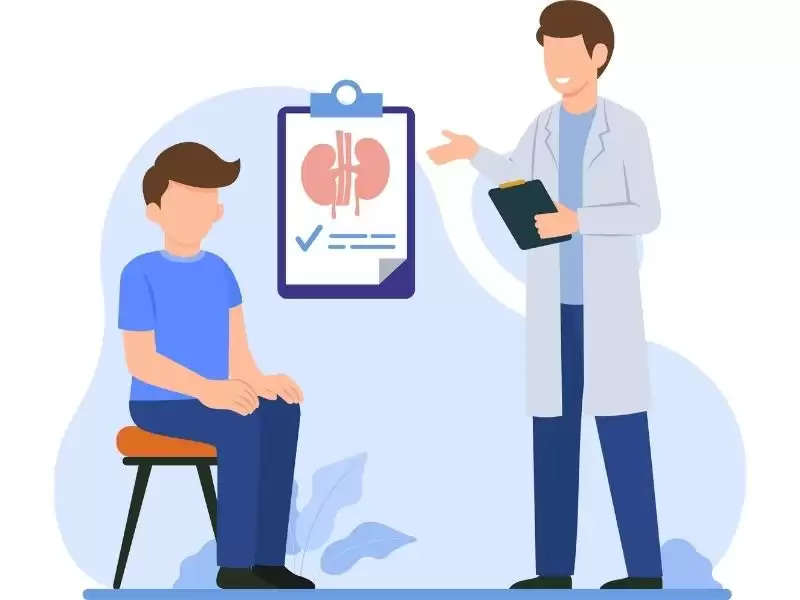Urinary system stone disease is the most common disease of the urinary system, which is common in the world, and is seen at a rate of 1-20% in industrial societies. Although it is seen everywhere in the world and in every climate, it occurs more frequently in hot regions and seasons. Increase in water loss through sweating, thus decreasing the amount of urine and increasing the urine concentration, easier precipitation of dissolved substances in the urine are responsible for this. Our country is an endemic region in terms of stone disease. Stone disease is common. Urinary system stone disease is most common between the ages of 30 to 60. It is three times more common in men compared to women. The lifetime risk of stone formation in adult men is accepted as 20%, and this rate is 5-10% in women. The risk of stone formation in a person with stone disease has been reported to be more than 50% within 5 years.
In recent years, open surgery is less preferred in the treatment of stone diseases, on the contrary, endoscopic techniques are used much more. Currently, kidney or ureteral canal stones of any size can be treated in any localization using endoscopic methods.
What Is Laser?
A laser is a highly focused beam of light of a specific wavelength. It is widely used in urology. The laser used for stone fragmentation is the holmium laser and its wavelength is 2100 nm.
Which Stones Are Eligible For Laser?
All stones can be fragmented by laser. Hard stones take longer to fragment, while softer stones take less time.
What Is The Operation Of Stone Fragmentation By Laser?
This method is called flexible ureterorenoscopy. It is a special technique that has been widespread in urology for 4-5 years. It requires serious experience and equipment infrastructure is needed. In this method, stones are fragmented by a completely closed method without making an incision and without opening any holes in the body. A special lighted instrument (ureteroscope) inserted through the urinary canal is advanced up to the kidney. The stone is localized and visualized with the ureteroscope. Stones are fragmented by laser fibers passing through this device. After the fragmentation process, the stones become completely sand. Stones in the form of sand are excreted from the body without pain. Relatively larger stone fragments (around 0.5-1 mm) can be caught with tools called baskets and taken out of the body. A wire with both ends bent (D-J stent) is placed in the kidney to avoid pain when the stones are excreted from the body. This wire stays in the body for about 10 to 15 days. Then, after making sure that all the stones have been excreted from the body, the stent is removed. A fluoroscopy device is required as a standard during the laser kidney stone fragmentation process. In other words, this process is performed with the help of X-ray. X-ray poses an extra risk for both the patient and the doctor. I do not use X-ray in the clinic, thanks to a new technique that we have determined in the laser kidney stone fragmentation process in recent years. In other words, this process is performed in a completely radiation-free and harmless way. When necessary, I use very low doses of X-ray within safe limits, protecting the patient and the surgical team.
What Size Should The Stones Be For The Laser Kidney Stone Fragmentation?
Theoretically, it is ideal to apply laser kidney stone fragmentation to stones 1.5-2 cm and below. I generally prefer this approach. However, it can sometimes be applied to larger stones depending on the condition of the patient and the structure of the stone. It should be known that the larger the stone, the longer the processing time and the longer it will take for the stone to be excreted.
Laser Stone Fragmentatıon Is Suıtable For Stones In Which Part Of The Kidney?
Laser kidney stone fragmentation is a technique that has a different chance of success depending on the location of the stone in the kidney. 1.5-2 cm and smaller stones located in the middle and upper poles of the kidney are considered ideal for this method. The situation is controversial for stones of the same size located in the lower pole of the kidney. However, urology guidelines specify that the first preferred method for these stones is laser stone fragmentation.
Laser stone fragmentation can also be performed for stones that come out of the kidney and enter the canal. The only and important difference here is that the imaging device used must be rigid. With this method, stones can be fragmented by laser. However, the stone may return to the kidney during the procedure. In this case, the operation can be continued if a flexible ureteroscope is used.
Are Children Eligible For Laser Stone Fragmentation?
This method can also be safely performed for children. It can be performed even in 6-month-old babies. Especially baby girls are more advantageous for the procedure. Due to the nature of the children, the instruments used during the procedure can be delivered to the kidney more easily. Sometimes, it may be necessary to insert a temporary stent in the kidney when there is no guide wire suitable for the kidney. This stent expands the kidney canal and allows easy access to the kidney in the second session.
What Are The Advantages Of Laser Kıdney Stone Fragmentatıon Method?
This method has many advantages compared to open surgery and other methods. These are:
Less pain
Short operation duration
Average hospital discharge time of 12 hours
The lack of suture and incision
Almost zero surgical complications
Stone fragmentation in the ratio of 95-97%


